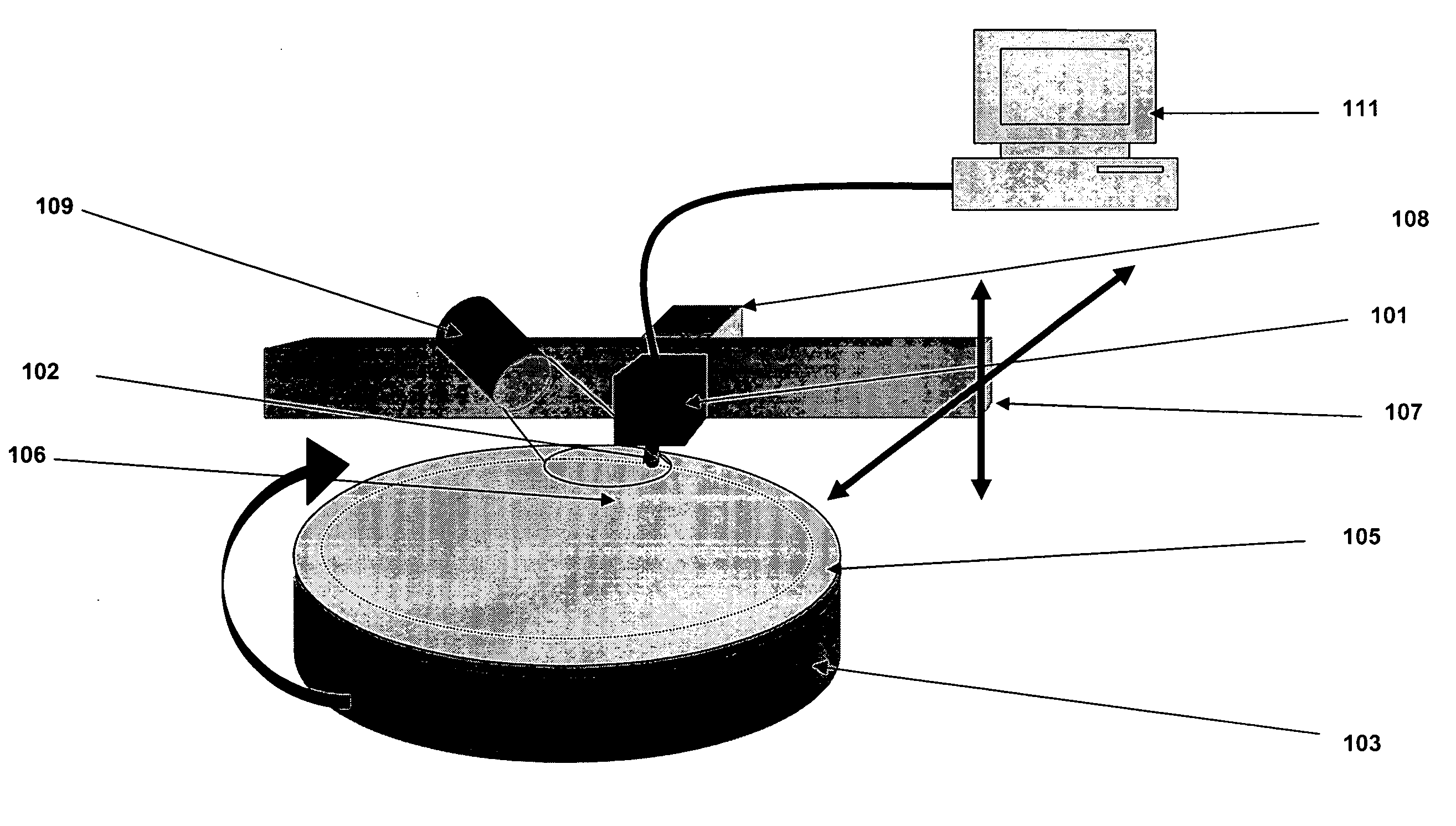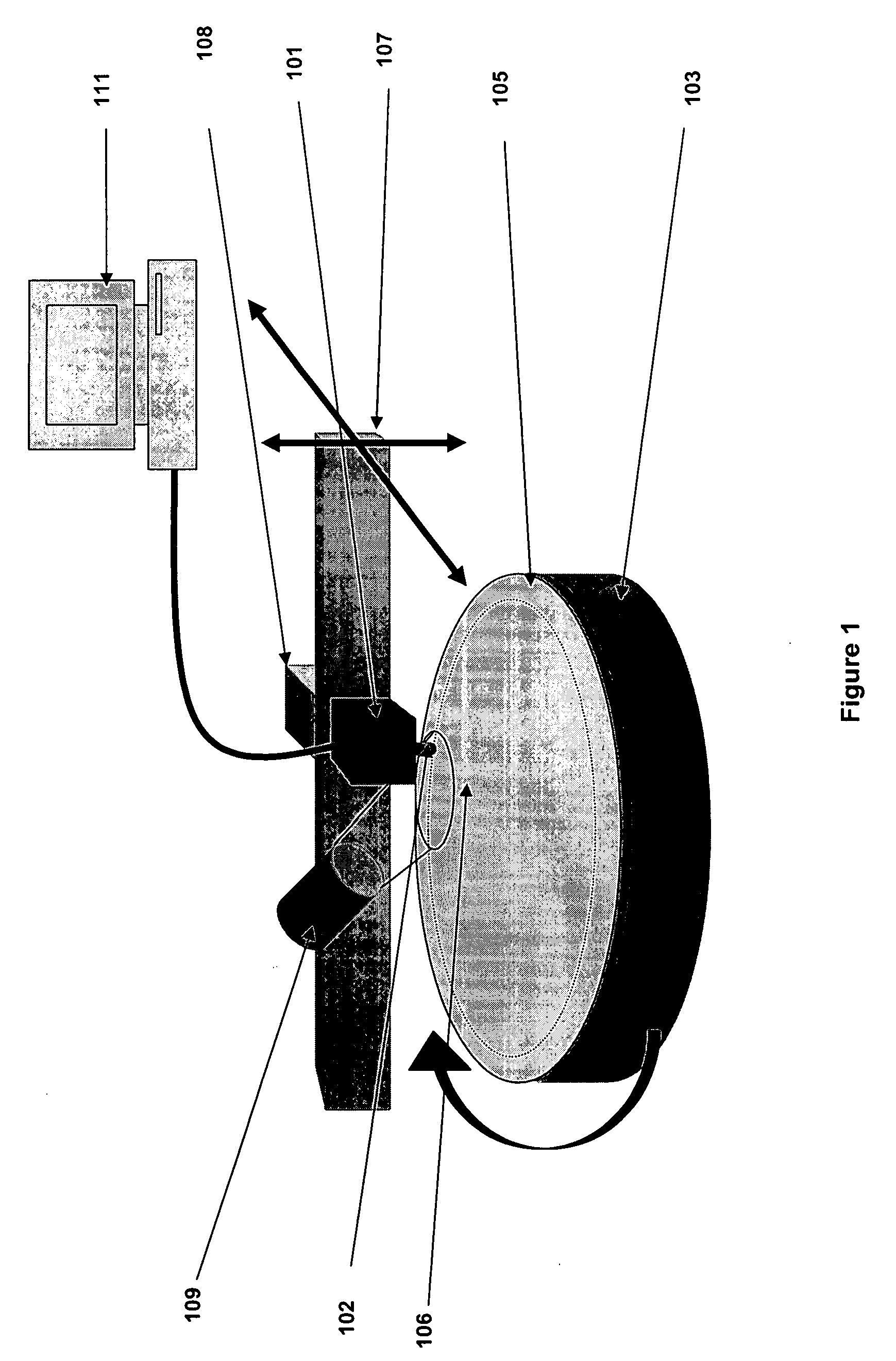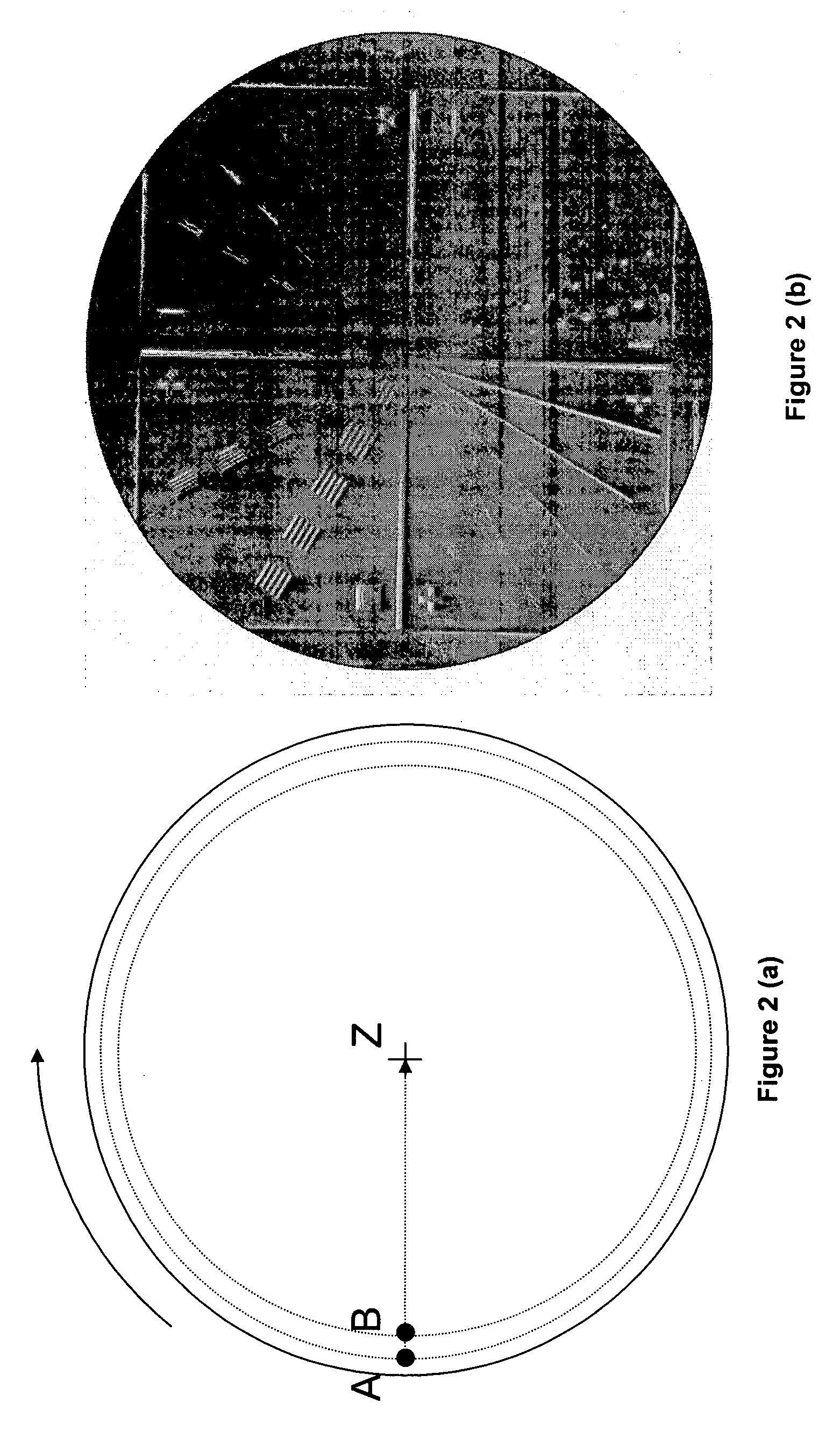Semiconductor inspection system and apparatus utilizing a non-vibrating contact potential difference sensor and controlled illumination
a contact potential difference sensor and semiconductor technology, applied in the direction of individual semiconductor device testing, semiconductor/solid-state device testing/measurement, instruments, etc., can solve the problems of metal contamination not being able to be detected, system slowness, destructive, etc., to achieve the effect of easy detection and classification of surface contaminants
- Summary
- Abstract
- Description
- Claims
- Application Information
AI Technical Summary
Benefits of technology
Problems solved by technology
Method used
Image
Examples
examples
[0031]FIG. 3 illustrates non-vibrating contact potential difference images of a wafer 105. FIG. 3(a) is super-bandgap illumination, FIG. 3(b) is with no illumination and FIG. 3(c) is the difference between that shown in FIG. 3(a) and FIG. 3(b). The pattern in 3(c) is boron implanted into the wafer 105. The difference image shows a strong doping pattern and minimizes the signal from surface contaminants which are visible in (a) and (b).
[0032]FIG. 4 illustrates the non-vibrating contact potential difference images of the wafer 105 shown in FIGS. 3(a)-(c) with processing to identify regions of non-uniformity. The images have been processed by identifying regions of the image that fall above and below threshold values. Non-uniformity is clearly identified in FIG. 4(c), but is not distinguished from surface contamination in FIGS. 4(a) and 4(b).
[0033]There are many alternate mechanical configurations and scanning operations that would accomplish the same result as the embodiment described...
PUM
 Login to View More
Login to View More Abstract
Description
Claims
Application Information
 Login to View More
Login to View More - R&D
- Intellectual Property
- Life Sciences
- Materials
- Tech Scout
- Unparalleled Data Quality
- Higher Quality Content
- 60% Fewer Hallucinations
Browse by: Latest US Patents, China's latest patents, Technical Efficacy Thesaurus, Application Domain, Technology Topic, Popular Technical Reports.
© 2025 PatSnap. All rights reserved.Legal|Privacy policy|Modern Slavery Act Transparency Statement|Sitemap|About US| Contact US: help@patsnap.com



